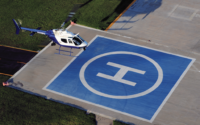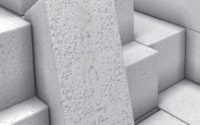Autoclaved Aerated Concrete Market Trends in 2022
Autoclaved Aerated Concrete (AAC) refers to a lightweight, precast, foam concrete material that is ideal for manufacturing concrete masonry units like walls, floors, and roofs. ACC products are made from lime cement, aluminum powder, quartz sand, calcined gypsum, and water. ACC products are utilized in both exterior and interior construction and are further painted with plaster or stucco compound or plaster to guard against the elements. Moreover, ACC is considered an excellent material for soundproofing, exhibits high resistance to fire and termite, and facilitates easy installation as it is light in weight. As a result, Autoclaved Aerated Concrete is widely adopted for the construction of several infrastructures across the globe.
In addition, Autoclaved Aerated Concrete material is economical and easy to transport in comparison to poured concrete or poured block. Consequently, the governments of various countries are increasingly adopting ACC to boost the development of infrastructure. Moreover, with the bolstering population, there is a surging need to accommodate the rising population, particularly in the urban areas. Besides this, with the rising concerns related to climate change and the increasing carbon footprints from building and improving infrastructure, the market players are increasingly opting for sustainable construction materials. Several governments are taking initiatives to sign up for zero-emission construction projects and promoting the adoption of sustainable construction materials such as autoclaved aerated concrete (AAC). For instance, to further accelerate the adoption of ACC as the green building material, the European Autoclaved Aerated Concrete Association has been actively working in support of the ‘European Green Deal.’ Apart from this, as ACC is lightweight, the replacement of regular concrete with ACC has sped up the time-consuming construction process. This, in turn, is helping in speeding up urbanization and accommodating the growing population across the metropolitan cities of several nations. In addition, the government of Colombia is also increasingly making efforts to accelerate the speed of residential and commercial construction projects. An initiative to support these efforts is the subsidy program to help low and medium-income households in buying homes.
Besides this, the manufacturing process of ACC products significantly utilizes less water, which is added while mixing the components. This eventually reduces the growth of weeds or algae on the component. This further propels the demand for ACC products, thereby surging the growth of autoclaved aerated concrete (AAC) market. In line with this, the ease of manufacturing of ACC components is attracting numerous new market players in the ACC industry who may launch ACC materials with enhanced quality, and the existing players may expand their production capacities, thereby providing a positive outlook to the overall market. For instance, H+H International is looking forward to expanding its production of wall building materials in Germany. Probitas Ventures LLC, a building material dealer based in South Carolina, USA, is building an advanced production unit to manufacture AAC.
According to TechSci Research report on “Global Aerated Autoclaved Concrete Market” By Product Type (Block, Lintel, Floor Elements, Roof Panel, Wall Panel, Cladding Panel, and Others), By End User (Residential, Commercial, Industrial, Infrastructure), By Application (Construction Materials, Road Construction, Roof Insulation, Bridge Sub-Structure, Void Filling, and Others), By Region”, the global aerated autoclaved cement market is anticipated to grow at a formidable rate during the forecast period. The market growth can be attributed to the propelling demand for sustainable and energy-efficient, and green building materials.
Mr. Ken Mathews
708 Third Avenue,
Manhattan, NY,
New York – 10017
Tel: +1-646-360-1656
Email: sales@techsciresearch.com



